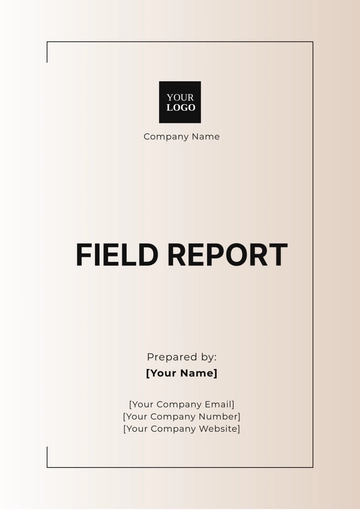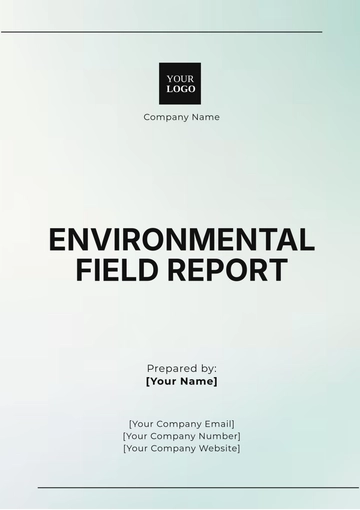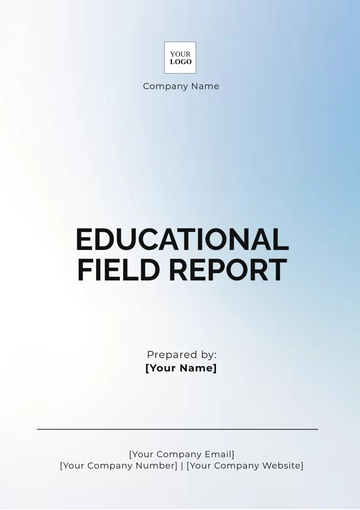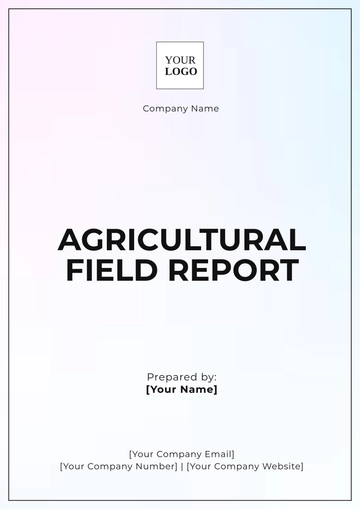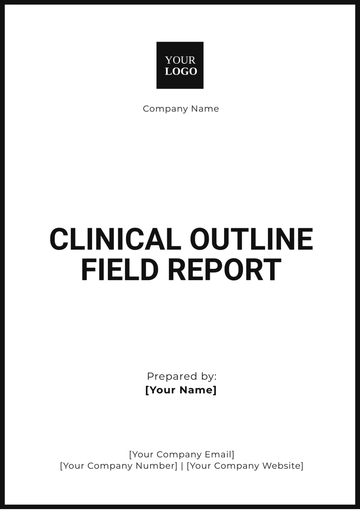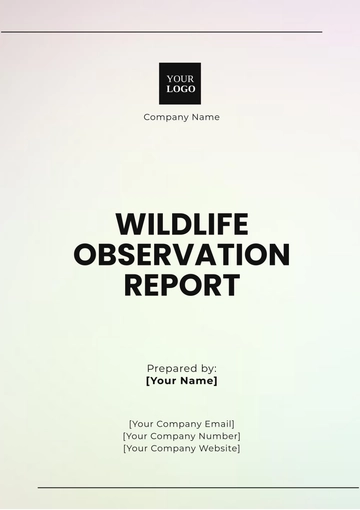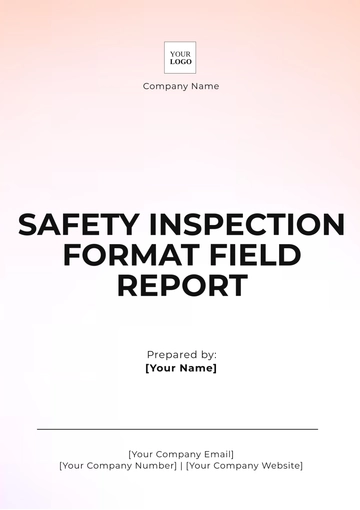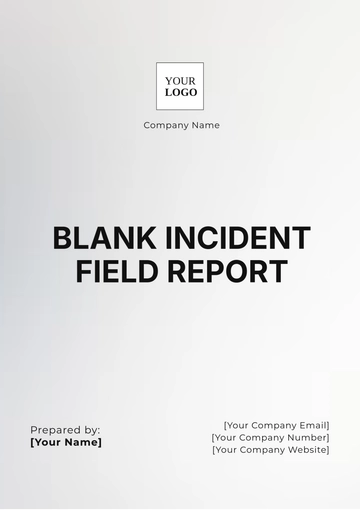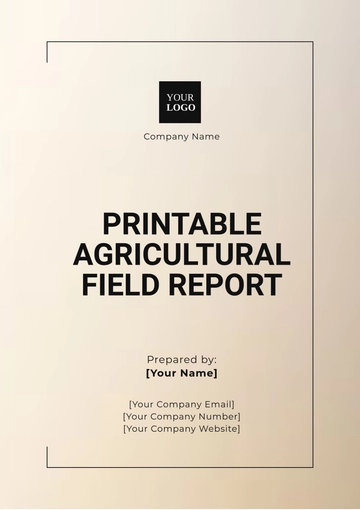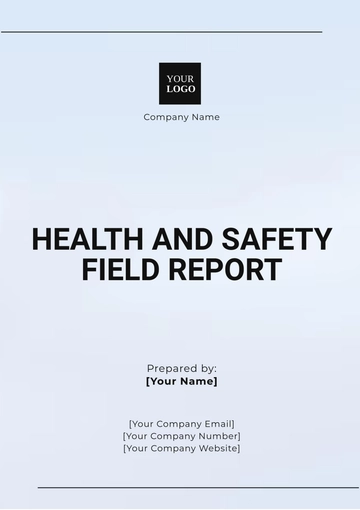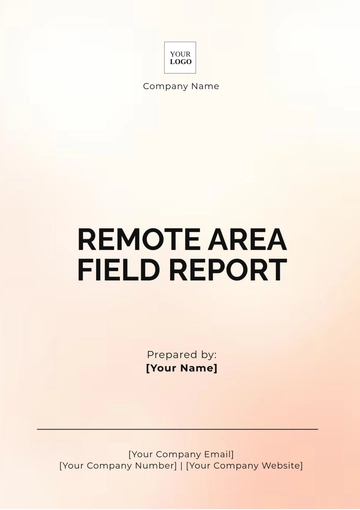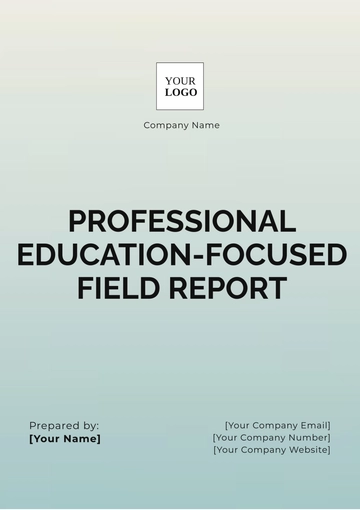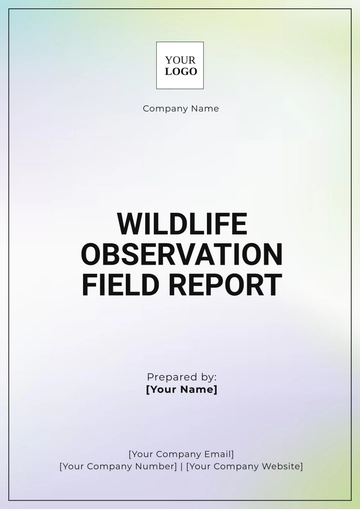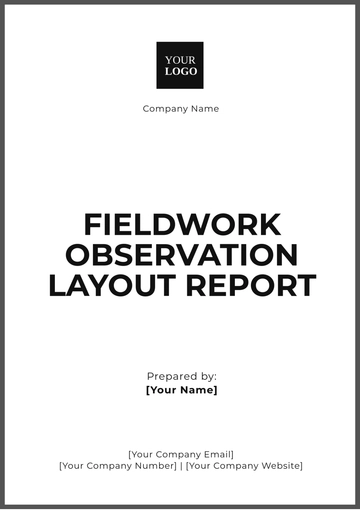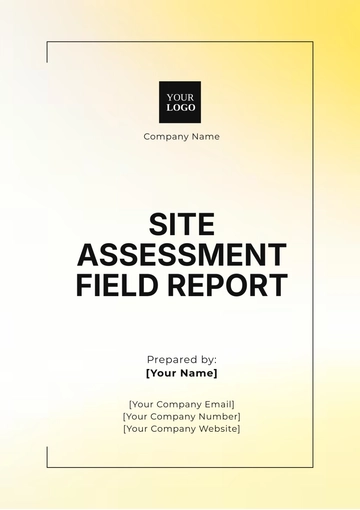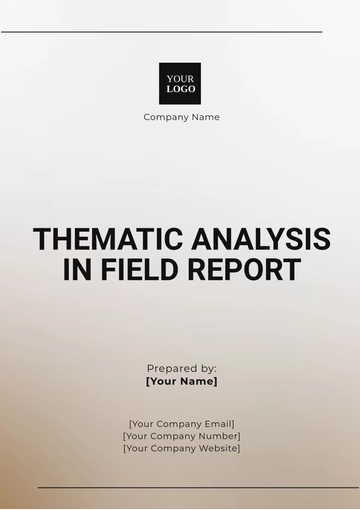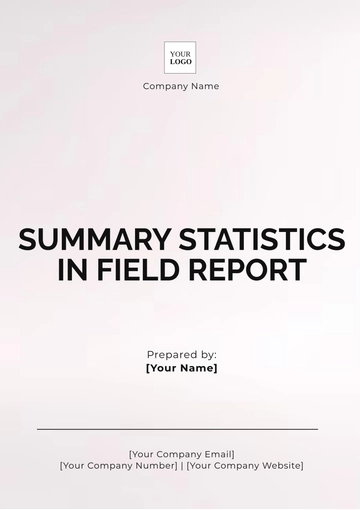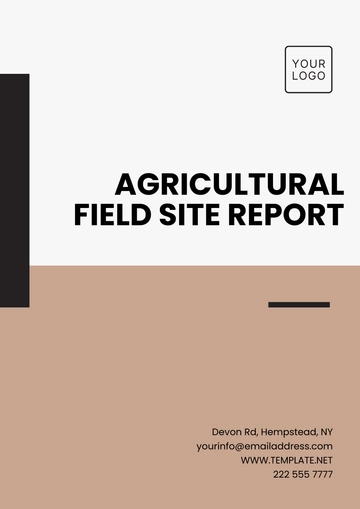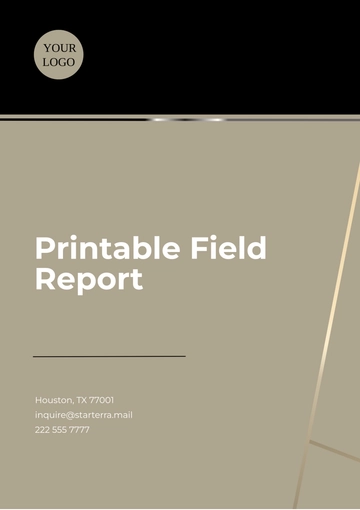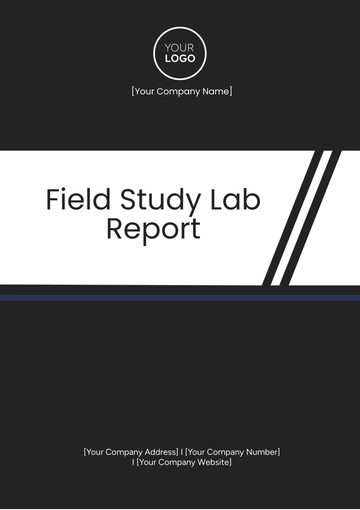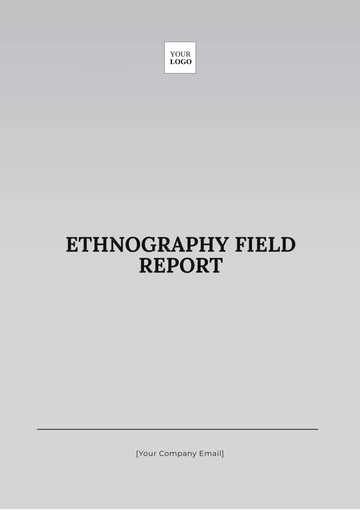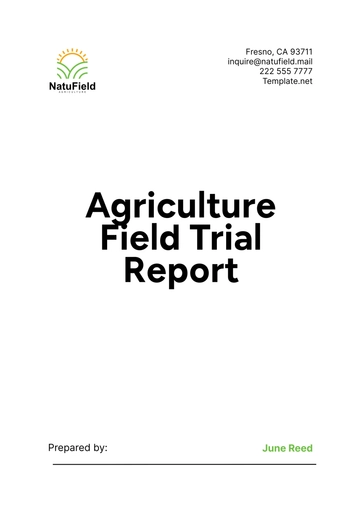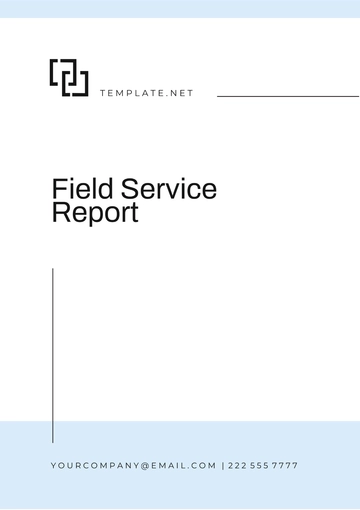Free Agricultural Field Report
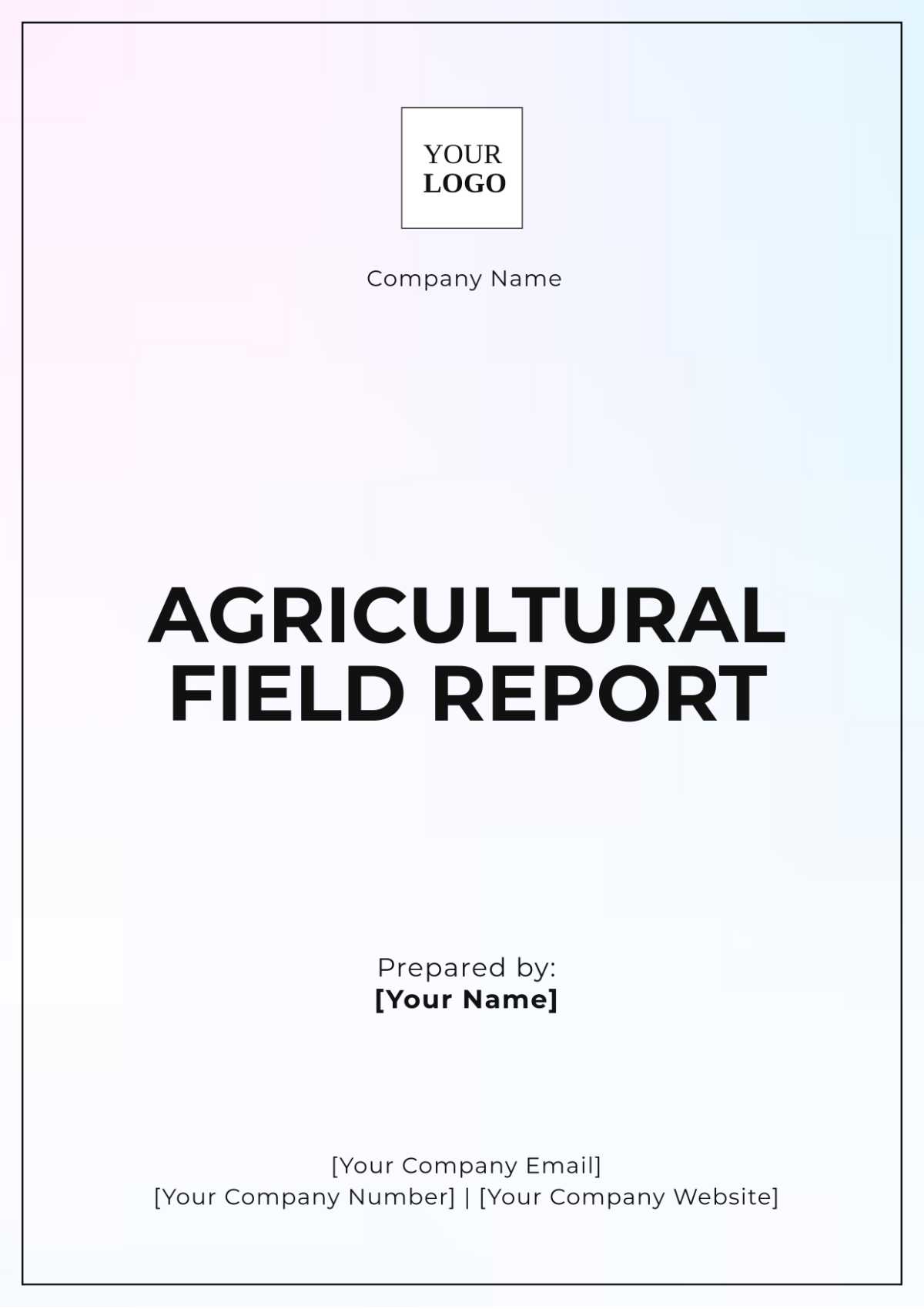
Title: "Agricultural Field Report: Analysis and Recommendations for the 2050 Growing Season"
Prepared by: [Your Name]
Date: [Date]
I. Introduction
This Agricultural Field Report provides a detailed analysis of the field observations, data collection, and evaluation of agricultural activities conducted in the selected fields throughout the 2050 growing season. The report aims to assess crop performance, soil health, pest management effectiveness, and the impact of weather conditions on agricultural productivity. The focus is on emerging technologies and sustainable practices being applied to meet the challenges of modern agriculture.
II. Methodology
II.I Field Selection
Fields were chosen based on crop type, historical yield data, soil conditions, and climatic variations. The selected fields represent diverse geographical areas within the farming region to provide a comprehensive overview of agricultural conditions and practices. The fields monitored include:
Field A (North Region): Corn and soybeans on clay loam soil with a focus on high-yield hybrid corn.
Field B (East Region): Wheat and legumes on sandy loam, with a focus on soil health and organic matter.
Field C (South Region): Mixed cropping of soybeans and cover crops (cover crops included clover and radishes) on loam soil for soil regeneration.
II.II Data Collection Techniques
Data collection was conducted using a combination of traditional field surveys, remote sensing technology, soil sampling, and weather monitoring systems. Regular observations were recorded through advanced sensors and drones equipped with thermal and multispectral imaging to assess crop health, soil moisture levels, and pest infestations.
Soil Sampling: Randomized soil samples were collected at three different depths (0-10 cm, 10-20 cm, and 20-30 cm) to monitor nutrient levels and pH.
Weather Monitoring: Automated weather stations placed in each field recorded real-time data on rainfall, temperature, humidity, and wind speed. These measurements were supplemented by satellite weather data to analyze weather patterns over the growing season.
II.III Analytical Tools
The following tools and software were used to analyze collected data and provide actionable insights:
SPSS (Statistical Package for the Social Sciences): Used for conducting statistical analysis on yield data, soil health metrics, and pest management efficacy.
GIS (Geographic Information System): Utilized for mapping the geographical location of fields, analyzing spatial data, and determining variations in crop performance and soil health.
Agricultural Modeling Software: Tools such as CropSyst and DSSAT (Decision Support System for Agrotechnology Transfer) were used to simulate crop growth, evaluate yield predictions, and forecast future agricultural conditions.
III. Results
III.I Crop Performance
The data collected during the 2050 growing season show variability in crop yields across the different fields. Factors contributing to this variability include soil type, weather conditions, pest management, and nutrient application.
Field | Crop | Yield (tons/ha) | Previous Year Yield (tons/ha) | Yield Change (%) |
|---|---|---|---|---|
Field A | Corn | 7.2 | 6.5 | +10.8% |
Field B | Wheat | 4.8 | 4.2 | +14.3% |
Field C | Soybean | 4.1 | 3.8 | +7.9% |
III.II Soil Conditions
Soil health monitoring revealed varied conditions across the fields. Soil pH ranged between 5.6 to 7.1, with the majority of fields showing neutral to slightly acidic soil. Soil tests revealed the following nutrient levels:
Field A (North Region): High levels of nitrogen (N) and phosphorus (P), but potassium (K) was deficient, affecting corn growth.
Field B (East Region): Balanced nutrient levels, with adequate nitrogen and phosphorus, but slightly higher levels of organic matter, promoting better wheat growth.
Field C (South Region): Good nutrient levels, with a high presence of beneficial microbes, supporting healthy soybean growth.
III.III Pest Management
Integrated Pest Management (IPM) principles were effectively applied during the season. Monitoring showed that pest populations, including aphids and rootworms, were well-controlled through non-chemical methods, such as biological agents (e.g., parasitoid wasps) and soil-dwelling predators (e.g., nematodes).
Pest Damage Reduction: Overall pest-related crop damage decreased by 30% compared to the previous year, with fewer incidences of root rot in the wheat fields.
III.IV Weather Impacts
The growing season in 2050 was characterized by above-average rainfall, with some localized heavy storms in the early months, delaying planting in some fields but providing adequate water later in the season. The data suggests:
Rainfall: Total seasonal rainfall was 30% above average, beneficial for crop growth but leading to temporary soil waterlogging in some fields.
Temperature: Average temperatures remained within the optimal range for crop development, with slight fluctuations in mid-season.
IV. Discussion
The 2050 agricultural season showed improved crop performance compared to previous years, with increases in yields across all fields. The positive impacts of IPM, along with optimized soil health strategies, contributed to the overall success. However, potassium deficiencies and variable weather conditions continue to challenge productivity, particularly in nutrient-intensive crops like corn.
The use of modern agricultural technologies, including remote sensing and predictive modeling, allowed for more precise management of resources, such as water and fertilizers. These innovations, along with sustainable practices like crop rotation and organic matter management, show promise for long-term agricultural sustainability.
V. Recommendations
V.I Soil Management
To address potassium deficiencies, it is recommended that a comprehensive soil nutrient management plan be implemented:
Fertilization Strategy: Use potassium-rich fertilizers (e.g., potassium sulfate) in combination with organic amendments like compost and biochar to improve soil structure and nutrient availability.
Cover Cropping: Encourage the use of nitrogen-fixing and deep-rooted cover crops, such as clover and radishes, to enhance nutrient cycling and soil health.
V.II Crop Rotation
Implementing a well-designed crop rotation plan will improve soil health and reduce reliance on chemical inputs. Suggested rotations include alternating between nitrogen-fixing legumes (such as peas or lentils) and nutrient-demanding crops like corn and wheat.
V.III Weather Adaptation Strategies
Invest in advanced irrigation systems and water conservation techniques to mitigate the effects of rainfall variability:
Smart Irrigation Systems: Use sensor-based irrigation systems that adjust water application based on real-time soil moisture levels.
Rainwater Harvesting: Build rainwater harvesting systems in key locations to store excess rainfall during heavy storms for use during dry periods.
VI. Conclusion
The 2050 Agricultural Field Report highlights the significant improvements in crop yields due to better pest management, soil health, and the application of modern agricultural technologies. While challenges remain, particularly with potassium deficiencies and unpredictable weather patterns, the overall outlook for the future of agriculture is promising with ongoing adaptation to climate change and technological advancements. Continued monitoring and data-driven strategies will further enhance sustainability and productivity in the coming years.
VII. Appendices
Appendix A: Detailed Soil Nutrient Data
Full soil nutrient analysis results for each sampled field, including macronutrient and micronutrient levels, organic matter content, and microbial activity.
Appendix B: Pest Management Schedule and Data
A comprehensive record of pest control measures, including biological agents, pesticide applications, timings, and effectiveness assessments.
Appendix C: Weather Data Logs
Detailed daily weather statistics for the growing season, including rainfall, temperature, humidity levels, and wind speed.
- 100% Customizable, free editor
- Access 1 Million+ Templates, photo’s & graphics
- Download or share as a template
- Click and replace photos, graphics, text, backgrounds
- Resize, crop, AI write & more
- Access advanced editor
The Agricultural Field Report Template from Template.net is fully customizable and editable, designed to help you efficiently document crop progress, soil conditions, and field observations. Tailor it to your specific needs with ease using our Editable in our Ai Editor Tool. Perfect for farmers and agricultural professionals, this template simplifies your reporting process, saving time and improving accuracy.
You may also like
- Sales Report
- Daily Report
- Project Report
- Business Report
- Weekly Report
- Incident Report
- Annual Report
- Report Layout
- Report Design
- Progress Report
- Marketing Report
- Company Report
- Monthly Report
- Audit Report
- Status Report
- School Report
- Reports Hr
- Management Report
- Project Status Report
- Handover Report
- Health And Safety Report
- Restaurant Report
- Construction Report
- Research Report
- Evaluation Report
- Investigation Report
- Employee Report
- Advertising Report
- Weekly Status Report
- Project Management Report
- Finance Report
- Service Report
- Technical Report
- Meeting Report
- Quarterly Report
- Inspection Report
- Medical Report
- Test Report
- Summary Report
- Inventory Report
- Valuation Report
- Operations Report
- Payroll Report
- Training Report
- Job Report
- Case Report
- Performance Report
- Board Report
- Internal Audit Report
- Student Report
- Monthly Management Report
- Small Business Report
- Accident Report
- Call Center Report
- Activity Report
- IT and Software Report
- Internship Report
- Visit Report
- Product Report
- Book Report
- Property Report
- Recruitment Report
- University Report
- Event Report
- SEO Report
- Conference Report
- Narrative Report
- Nursing Home Report
- Preschool Report
- Call Report
- Customer Report
- Employee Incident Report
- Accomplishment Report
- Social Media Report
- Work From Home Report
- Security Report
- Damage Report
- Quality Report
- Internal Report
- Nurse Report
- Real Estate Report
- Hotel Report
- Equipment Report
- Credit Report
- Field Report
- Non Profit Report
- Maintenance Report
- News Report
- Survey Report
- Executive Report
- Law Firm Report
- Advertising Agency Report
- Interior Design Report
- Travel Agency Report
- Stock Report
- Salon Report
- Bug Report
- Workplace Report
- Action Report
- Investor Report
- Cleaning Services Report
- Consulting Report
- Freelancer Report
- Site Visit Report
- Trip Report
- Classroom Observation Report
- Vehicle Report
- Final Report
- Software Report
